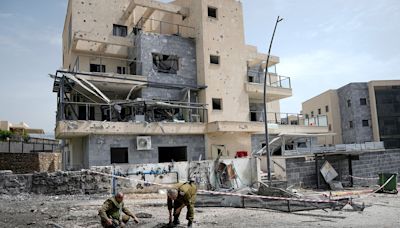Search results
Mount Lebanon ( Arabic: جَبَل لُبْنَان, jabal lubnān, Levantine Arabic pronunciation: [ˈʒabal ləbˈneːn]; Syriac: ܛܘܪ ܠܒ݂ܢܢ, ṭūr leḇnān, Syriac pronunciation: [tˤur lewˈnɔn], ṭūr lewnōn) is a mountain range in Lebanon. It is about 170 km (110 mi) long [1] and averages above 2,500 m (8,200 ft) in elevation ...
- Geography
The western range, the second major region, is the Lebanon...
- Mount Lebanon Governorate
The Governorate of Mount Lebanon (except the area around...
- Geography
The western range, the second major region, is the Lebanon Mountains, sometimes called Mount Lebanon, or Lebanon proper before 1920. Since Roman days the term Mount Lebanon has encompassed this area. Antilibanos (Anti-Lebanon) was used to designate the eastern range. Geologists believe that the twin mountains once formed one range.
The Governorate of Mount Lebanon (except the area around Beirut) extends along the coast of the Mediterranean Sea. It borders the Northern Governorate in the northern part and the Southern Governorate in the southern part. On the eastern side, it borders the governorates of Bekaa and Baalbek-Hermel.
Lebanon Mountains, mountain range, extending almost the entire length of Lebanon, paralleling the Mediterranean coast for about 150 miles (240 km), with northern outliers extending into Syria. The northern section, north of the saddle, or pass, of Ḍahr al-Baydar (through which the Beirut–Damascus.
- The Editors of Encyclopaedia Britannica
The Mount Lebanon region is an outdoor adventure-lover's paradise. With high, snow-capped mountains running north to south through the center of the country, this region offers a rocky, rugged terrain that is perfect for a variety of outdoor sports and adventure activities.
Chouwen Lake Trail. Moderate•4.6(44) Keserwan, Mount Lebanon, Lebanon. Photos (62) Directions. Print/PDF map. Share. More. Length2.0 miElevation gain708 ftRoute typeOut & back. Head out on this 2.0-mile out-and-back trail near Keserwan, Mount Lebanon.
Mount Lebanon extends from the hinterland of Tripoli in the north to that of Sidon in the south. Because of its geographical isolation and rugged landscape, it historically attracted minorities in search of a haven from persecution.

